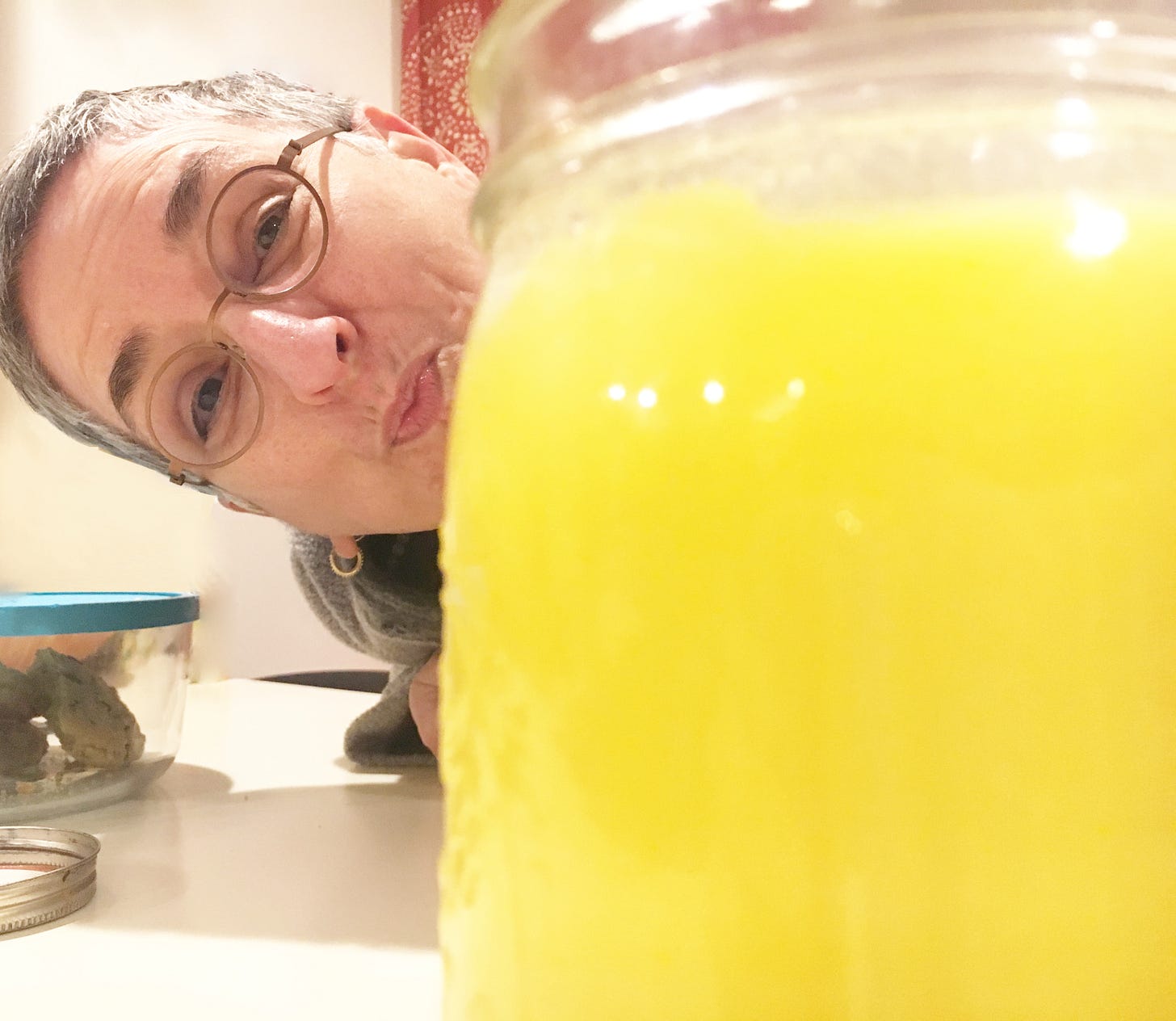What is ghee?
Ghee is clarified butter cooked somewhat longer than the European variety. Every trace of water and milk protein is removed, and only the pure butter oil remains.
Ghee is a cooking staple in many parts of the world including India, the Middle East, North Africa, and the Caribbean. It’s known as samneh in Arabic. In India, ghee is made with either buffalo or cow’s milk.
When made correctly, melted ghee glows with warm golden goodness and is perfectly clear. Stored properly, ghee can last for more than 100 years without going rancid!
The spiritual side of ghee
According to Ayurveda, ghee is mainly an expression of earth and water elements—the elements that make up kapha dosha. Ghee helps us to feel grounded and nourished and experience the abundance, generosity, and continuity of life.
Ghee supports ojas, the more esoteric, expansive form of kapha. Ojas is the juice and strength of life. Healthy ojas grants good immunity and adaptability. It imparts cheerfulness and the ability to roll with the ups and downs of life.
In its most exalted expression, healthy ojas is a bridge to experiencing universal love.
How is ghee used?
Ghee is used in cooking and baking just as any other cooking oil. It’s also a main ingredient in many sweets from different parts of the world.
Medicinal ghees are a staple in the Ayurvedic pharmacy. Some common medicinal ghees are triphala ghee, turmeric ghee, and shatavari ghee. Ghee helps herbs absorb deep into our tissues.
Ghee gazing is an Ayurvedic treatment for depression. Just melt some homemade ghee and pour it into a glass or white ceramic bowl. Gaze into it for 20 minutes. Be sure to enjoy the smell!
Ghee can be burned in the ritual lamps used for puja.
For a special treat, try ghee as a supreme facial moisturizer.
How to Make Ghee
One pound of butter should take about 20-30 minutes to turn into ghee once it starts to simmer. It will take longer if you make a bigger batch or if your butter is not high quality.
Prepare a pint-sized glass jar by cleaning it thoroughly and letting it completely air dry. A mason jar works well. Both the jar and the lid must be free from any dirt or grease and must be absolutely dry.
Place one pound of fresh, unsalted, organic butter in a small pot. Different brands of butter contain different amounts of water and milk solids. This varies seasonally, also. The quality of the butter you begin with greatly affects the amount of butter oil (ghee) you will harvest. European-style cultured butter tends to yield a larger amount of ghee.
Melt the butter over medium-low heat. When the melted butter starts simmering, it begins to foam. Turn the heat a bit lower and continue at a low simmer with the pot uncovered.
As the simmering progresses, small blobs of milk solids appear on the surface, and the amount of foam slowly decreases. The solids progressively settle on the bottom of the pot, and the ghee becomes more golden and transparent.
When the ghee is finished, the milk solids in the bottom of the pot look a little “toasted.” The foam on the surface of the ghee greatly thins and dries out leaving a slightly toasted and broken up crust. The ghee will have a rich, pop-corny smell and deep yellow color.
Take the ghee off the heat at once as it can burn easily at this point. Allow it to cool a little while you prepare the jar.
Cut out a double- or triple-layer square of cheese cloth big enough to completely cover the mouth of the jar with some hanging over the sides. Whether you need a double or a triple layer will depend on the the weave of the cloth. Secure it over the mouth of the jar with a rubber band. Make sure you depress the cloth a little way into the mouth of the jar, forming a pocket in which to pour the ghee. You can also use a sieve or metal tea strainer lined with cheese cloth.
Pour the golden liquid slowly through the cloth into the jar. Discard the brownish curds at the bottom of the pot, or spread them on toast if you aren’t too concerned about your cholesterol! The finished ghee should be absolutely clear, golden butter oil.
Allow the ghee to cool thoroughly at room temperature before putting the lid on it. This prevents condensation from ruining the ghee. When the ghee is cool, put the lid on the jar. At this point, unless it is a very hot day, the ghee will have solidified.
DO NOT REFRIGERATE YOUR GHEE. This will cause condensation as you move between the fridge and the warmer temperature of your kitchen, opening and closing the jar. Properly made, ghee will keep for years at room temperature.
Always use a perfectly clean spoon to scoop out ghee for use in cooking. Never get any food particles or water in your ghee as this will cause it to go rancid and moldy.
Enjoy your ghee!
with infinite love,
Shambhavi
Not quite ready to fire up a paid subscription, but want to show your appreciation?
Please join Shambhavi and the Jaya Kula community for satsang & kirtan every Sunday at 3:00pm Pacific. Come in person to 1215 SE 8th Ave, Portland, OR, or join Jaya Kula’s newsletter to get the Zoom link for satsang. You can also listen to my podcast—Satsang with Shambhavi—wherever podcasts are found.







